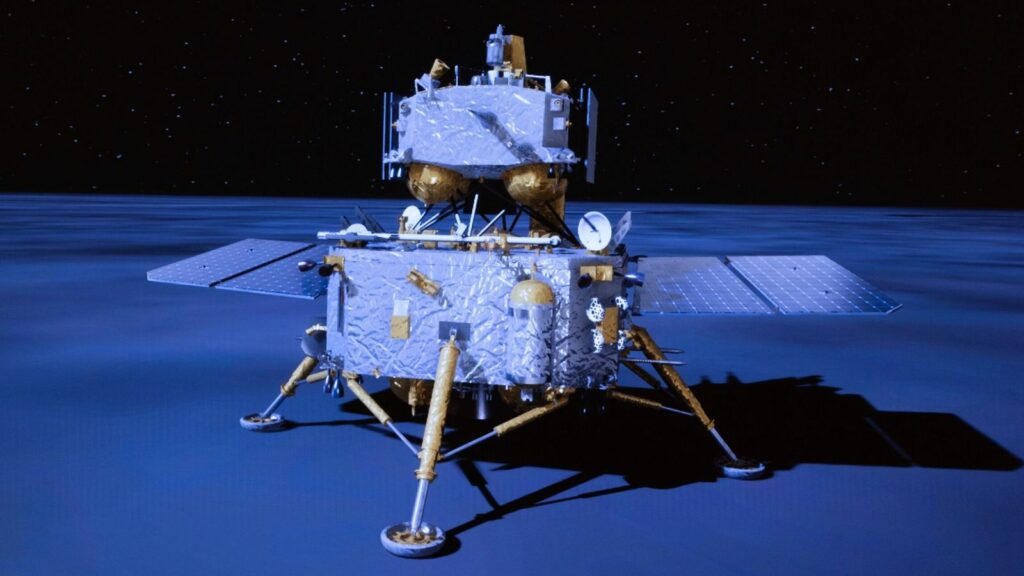China lands Chang’e-6 spacecraft on far side of moon in mission to bring back samples for first time | Science & Tech News

China has landed a spacecraft on the far side of the moon to collect soil and rock samples and bring them back to Earth for the first time.
The Chang’e-6 craft touched down in a huge crater known as the South Pole-Aitken Basin at 6.23am Beijing time on Sunday (11.23pm on Saturday in the UK), the China National Space Administration said.
The Chang’e landing module – named after a Chinese moon goddess – will use a mechanical arm and drill to gather up to 2kg (4.4lb) of surface and underground material for about two days.
An ascender on top of the lander will then take the samples in a metal vacuum container back to another module orbiting the moon.
The container will then be transferred to a re-entry capsule, which is due to return to Earth in the deserts of China’s Inner Mongolia region around 25 June.
It is hoped the mission will provide China with a record of the moon’s 4.5 billion-year history and provide new clues on the formation of the solar system.
The mission “involves many engineering innovations, high risks and great difficulty”, the China National Space Administration said on its website.
“The payloads carried by the Chang’e-6 lander will work as planned and carry out scientific exploration missions.”
It is China’s second mission on the far side of the moon – a region no other country has reached.
In 2019 Chang’e-4 became the first spacecraft to successfully land on the moon’s far side.
Such missions are more difficult because the far side faces away from the Earth – requiring a relay satellite to maintain communications. The region is also more rugged and features deep craters, meaning fewer flat areas to land.
Read more:
The space race for the moon’s water
What you need to know about NASA and China’s space race
Please use Chrome browser for a more accessible video player
0:55
China launches probe to far side of the moon
Hopes to put people on moon again
Missions to the moon are part of a growing competition in space exploration between China, the US and others, including Japan and India.
After India discovered there might be ice in the moon’s south pole craters in 2008 scientists have wanted to know if there is water up there, which would make missions to Mars far more achievable.
China hopes to land a person on the moon before 2030, making it the second nation after the US to do so, while America is planning to land its astronauts on the moon again for the first time in more than 50 years, though NASA has pushed the target date back to 2026.
The US has relied on private company rockets to launch spacecraft, though they have been repeatedly delayed.
Last-minute computer troubles halted the planned launch of Boeing’s first astronaut flight on Saturday.
Earlier in the day a Japanese billionaire called off his plan to orbit the moon because of uncertainty over SpaceX’s development of a mega-rocket, which NASA plans to use to send its astronauts to the moon.
Recent Posts
- Bratislava and Vilnius rank as cheapest Christmas market destinations
- Maximizing Share of Voice and Prioritizing Direct Bookings: A Strategic Guide for Hotels
- Aldar Adds to Saadiyat Cultural District’s Exceptional Luxury Living with Launch of Mandarin Oriental Residences
- Tributes paid to ‘wonderful ambassador’ Nan Short
- The Bellevue, Philadelphia’s Grande Dame Hotel, Reawakens After 120 Years







Recent Comments